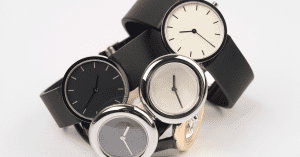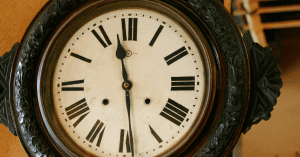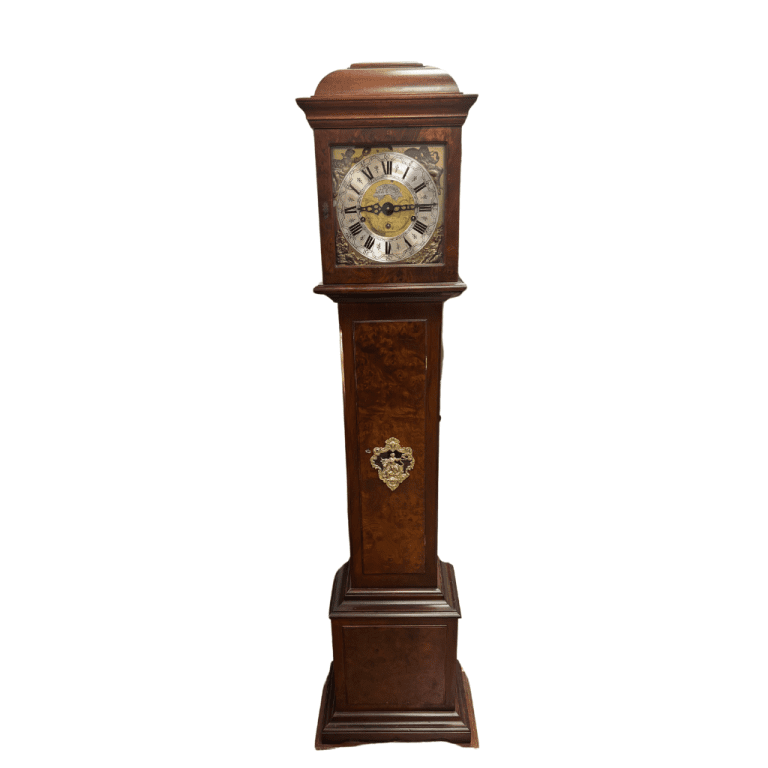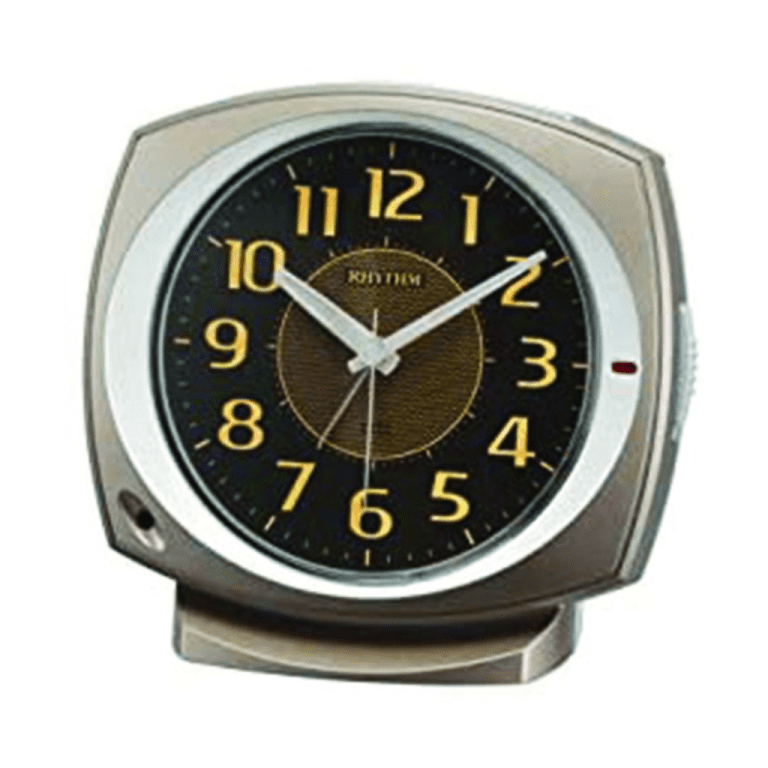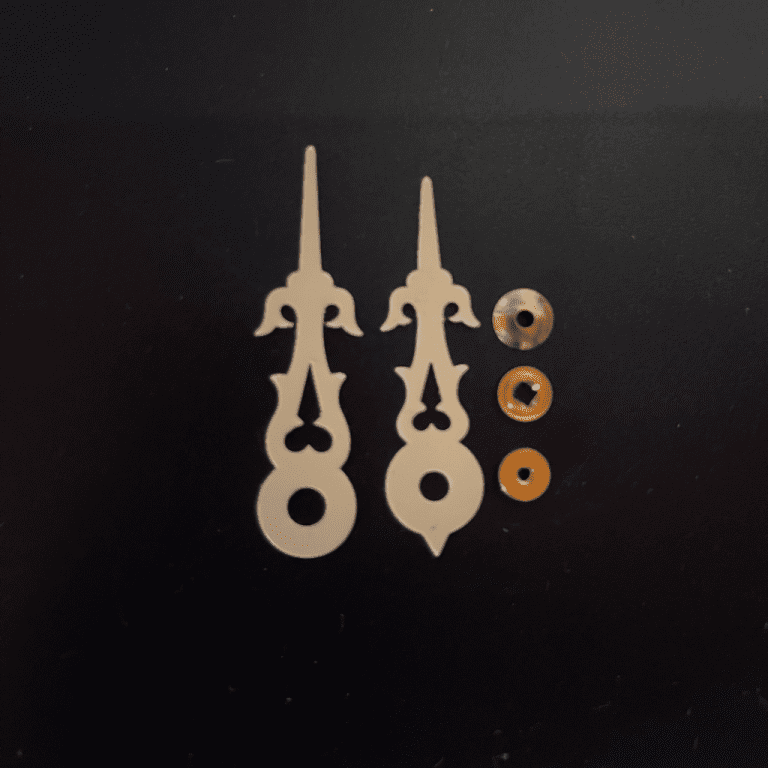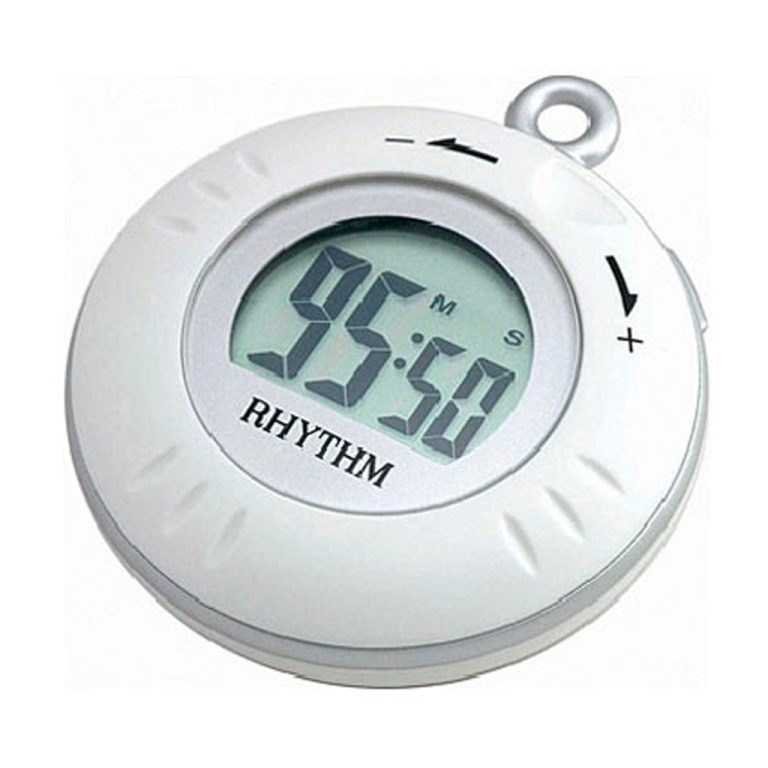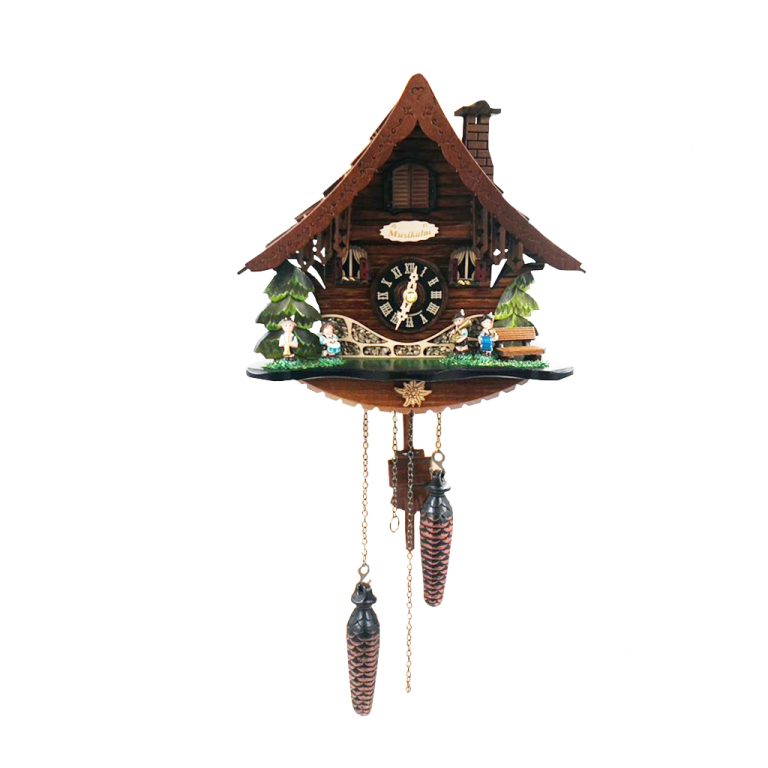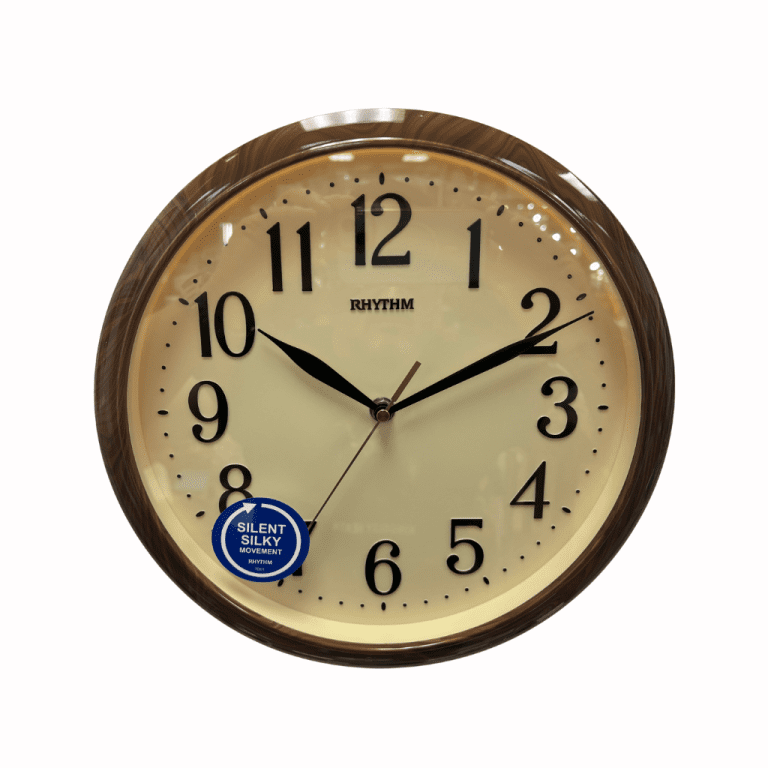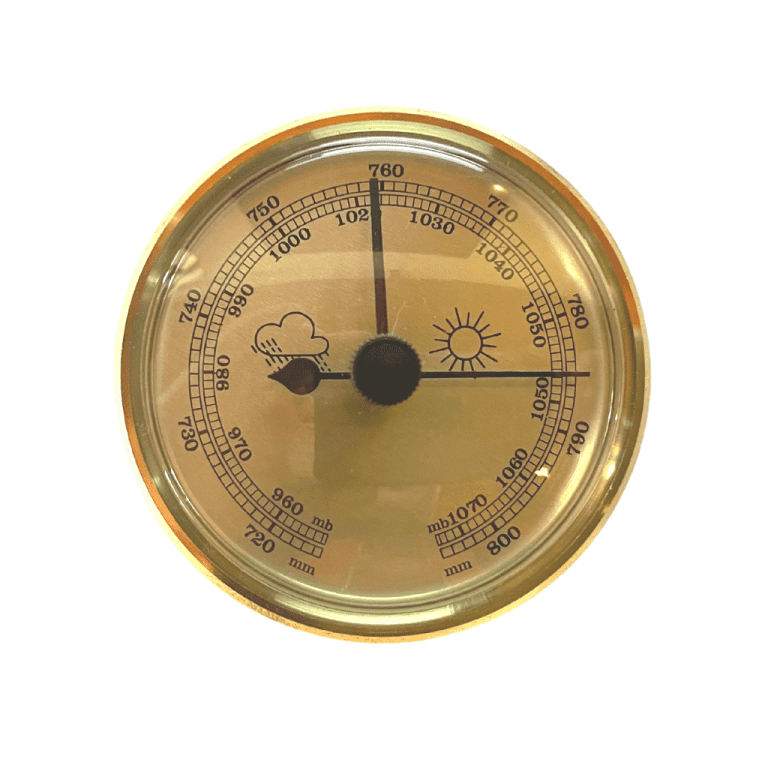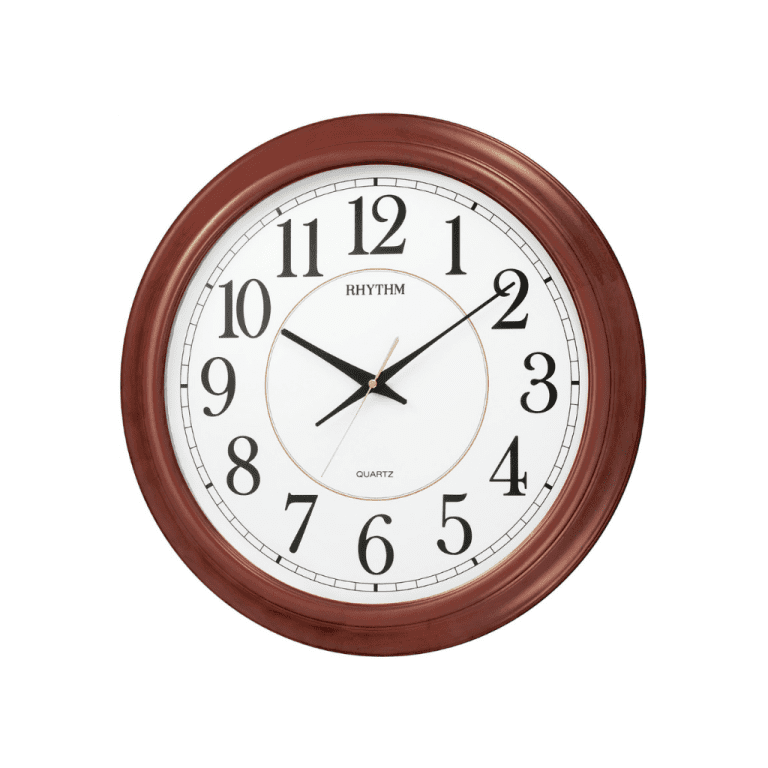What is an analogue clock?
Clocks are instruments that measure and show the time. An analogue clock is a clock or watch that has moving hands and (usually) hours marked from 1 to 12 to show you the time.
Some have Roman Numerals (I, II, III, etc) instead, or no numbers at all, instead only relying on the positioning of the hands and what angle they’re at to indicate the time.
What does analogue mean?
All clocks used to be what you call analogue devices before digital clocks were invented. An analogue clock contains two (or possibly three) “hands” that go around in circles to show you the current hour and minute (and possibly second).
Each of these hands can point anywhere along the circle. That means that the minute hand can point to every numerical value that exists between 0 and 60.
For example, when the minute hand is halfway between the 11 and 12 minute marks (both of which are between the 2 and 3 hour marks), the time must be 11.5 minutes past some hour. Halfway between that point and the 12 minute mark, the time must be 11.75 minutes past some hour.
As each hand moves continuously over a portion of its circular path, it moves through an infinite number of real numbers that represent the continuous moments of time.
Something that changes continuously like this—meaning it moves smoothly from one point to another without any sudden jumps or breaks—is called an analogue quantity. And that’s why this type of clock is called an analogue clock.
When were clocks invented?
For millennia, humans have been measuring time in various ways, some include tracking the movements of the sun with sundials, the use of water clocks, candle clocks, and hourglasses.
Our modern-day system of using a 60-minute and 60-second increment clock dates back to 2,000 B.C. from ancient Sumeria.
The first mechanical clocks (with a Clock Face) were invented in Europe around the start of the 14th century and were the standard timekeeping device until the pendulum clock was invented in 1656. There were many components that came together over time to give us the modern-day timekeeping pieces of today.
The Timeline of Timekeeping
Sundials and Obelisks – Ancient Egyptian obelisks, constructed about 3,500 B.C., are also among the earliest shadow clocks (the first devices used for measuring the parts of a day).
Greek Water Clocks – Around 250 BC the Greeks built a water clock, called a clepsydra, where the rising waters would both keep time and eventually hit a mechanical bird that triggered an alarming whistle.
Although they were more useful than sundials because they could be used indoors, during the night, and also when the sky was cloudy, clepsydras were not as accurate. Greek water clocks became more accurate around 325 B.C., and were adapted to have a face with an hour hand, making the reading of the clock more precise and convenient.
Candle Clocks – The earliest mention of candle clocks comes from a Chinese poem, written in 520 A.D. According to the poem, the graduated candle, with a measured rate of burn, was a means of determining the time at night. Similar candles were used in Japan until the early 10th century.
Hourglass – These were the first dependable, reusable, reasonably accurate and easily constructed time-measurement devices. From the 15th century onwards, hourglasses were used primarily to tell time while at sea.
An hourglass is made up of two glass bulbs connected vertically by a narrow neck that allows a regulated trickle of material, usually sand, from the upper bulb to the lower one. Hourglasses are still in use today.
Monastery Clocks and Clock Towers – The earliest medieval European clockmakers were Christian monks. The first recorded clock with a (Clock Face as we know it) was built by the future Pope Sylvester II around the year 996. Much more sophisticated clocks and church clock towers were built by later monks. Peter Lightfoot, a 14th-century monk of Glastonbury, built one of the oldest clocks still in existence and continues to be in use at London’s Science Museum.
Wrist Watch – In 1504, the first portable timepiece was invented in Nuremberg, Germany by Peter Henlein; but it wasn’t very accurate.
The first reported person to actually wear a watch on the wrist was the French mathematician and philosopher, Blaise Pascal (1623-1662). With a piece of string, he attached his pocket watch to his wrist.
Where does the word ‘clock’ originate from?
The English word “clock” replaced the Old English word daegmael meaning “day measure.” The word “clock” comes from the French word cloche meaning bell, which enters the language around the 14th century, around the time when clocks started hitting the mainstream.
How do analogue clocks work?
Analogue clocks date back to the 1500s and how they work has not changed much since that time. They have become more and more accurate in over the centuries, but the principle and engineering that makes them work is still the same.
An Analogue Clock Face can appear in lots of places, for example:
- A wrist watch
- A pocket watch
- A grandfather clock
- A wall clock
- Tower clocks
Each of these analogue clocks will need three fundamental parts to make it work: A mechanism, an energy source, and a display.
There are three types of ‘modern clock’ that make up analogue clocks. Let’s look at how each one is made:
Pendulum Clocks:
A pendulum clock features a large weight hung from a fixed point and allowed swinging back and forth. This type was first used by Galileo, when he discovered that a pendulum will always take the same amount of time to complete a full swing, even as air resistance reduces how far it will move with each swing.
In a pendulum clock, the weight uses gravity as an energy source, you would wind up the clock to lift the weights, and give them gravitational energy.
The pendulum would be attached to a series of gears that create the famous ‘tick’ ‘tock’ sound.
Finally, the gears would be attached to the clock hands, which would move with each tick of the gears.
Spring-Driven Analogue Watches:
People soon realized that a pendulum would not work very well in a pocket watch or wristwatch.
Instead of using weighted pendulums, wristwatches use a series of springs which are squeezed to store up energy. These springs then force a weighted wheel to bounce back and forth, causing the display to move.
Over time, the springs lose their energy and have to be wound up again, like winding up a toy.
Battery-Powered Quartz Clocks:
Today, most analogue clocks use crystals known as quartz to keep time. These clocks use a small battery as an energy source, and the battery releases a small amount of electricity through the quartz, forcing them to vibrate rapidly.
This vibration causes the ‘tick’ and ‘tock’ of the display hands.
Credited to: https://www.twinkl.co.za/


